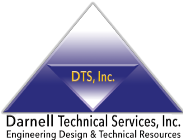Effective risk management in technical design is essential for ensuring timely project delivery and controlling costs. Engineering managers, technical project leaders, and operations directors, particularly those operating in California’s complex regulatory and environmental landscape, face unique challenges. Delays and cost overruns can jeopardize project success, but by adopting strategic approaches, these risks can be mitigated. This article explores actionable strategies to identify and address risks during engineering project planning and execution.
Identifying Risk Factors During Design Planning
The design phase is the foundation of any engineering project, making it a critical stage for identifying potential risks. Common risk factors include incomplete scope definition, inaccurate cost estimations, and unforeseen technical challenges. By conducting detailed feasibility studies and risk assessments upfront, project teams can anticipate potential issues and develop mitigation strategies.
One effective approach is to involve multidisciplinary teams during the design phase. Collaboration among engineers, stakeholders, and contractors helps identify diverse perspectives on potential risks. Comprehensive design reviews and peer evaluations further enhance this process, ensuring plans are robust and gaps are minimized.
How Environmental and Regulatory Factors Affect Project Timelines in California
California’s stringent environmental laws and permitting processes can significantly impact project timelines. Agencies such as the California Environmental Protection Agency (CalEPA) and local planning departments enforce rules that require meticulous compliance, including Environmental Impact Reports (EIRs), emissions controls, and habitat protections. Failure to address these requirements early can lead to costly delays and regulatory hurdles.
To mitigate these risks, engineering project teams should start environmental assessments as early as possible, ensuring they align with local and state regulations. Partnering with environmental consultants and using tools to streamline permitting processes can help avoid delays while maintaining compliance.
Integrating Digital Tools for Proactive Risk Tracking
Digital tools play an increasingly vital role in proactive risk management. Software platforms designed for project management, like Building Information Modeling (BIM) and risk-tracking applications, enable teams to forecast and monitor risks effectively throughout the project’s lifecycle. These tools centralize data, automate risk assessments, and provide real-time monitoring of project milestones.
Additionally, digital twin technology offers engineering managers the ability to simulate project scenarios and predict potential failures or inefficiencies without incurring actual costs. By integrating such tools into the design and execution phases, teams can reduce uncertainty and enhance decision-making processes.
Communication and Documentation Best Practices for Risk Mitigation
Clear communication and thorough documentation are key to effective risk management. Engineering managers must establish transparent communication channels among all stakeholders to ensure risks are promptly identified and addressed. Regular progress meetings, clear reporting structures, and shared digital dashboards can help streamline information flow and improve accountability.
Documentation is equally important. Recording decisions, risk assessments, and change orders provides a roadmap for addressing current risks and serves as a reference for future projects. Organizing this information in a centralized repository ensures accessibility and improves lessons-learned evaluations for ongoing improvements.
Lessons Learned from Common Project Overruns
Many project overruns stem from insufficient planning, scope changes, and failure to anticipate external influences. For instance, ignoring potential supply chain disruptions or underestimating labor market challenges can derail timelines and inflate budgets. Reviewing case studies and post-project analyses can help teams identify recurring issues and implement best practices to prevent similar problems.
For example, a road infrastructure project in Southern California faced significant delays due to late recognition of utility relocation challenges. By involving utility companies during the design phase in future projects, potential conflicts in planning and execution could be mitigated. Applying such lessons ensures teams remain proactive and adaptable in their approach.
Looking for Trusted Technical Talent or Project Support?
At Darnell Technical Services, we connect companies with skilled professionals in engineering, architecture, and infrastructure. Whether you need temporary staffing or long-term project support, we’re here to help you succeed.
📞 Contact us today at Corporate (714) 285-0082 or Las Vegas Office (702) 829-8446 — let’s build something great together.








